10 Best Zabbix Alternatives in 2026 (Self-Hosted, Open Source, and SaaS)
TL;DR:
- Too heavy for small setups or homelabs: pick a lighter self-hosted tool like Netdata, LibreNMS, or Checkmk.
- Don’t want to run and patch Zabbix yourself: go for a managed/commercial option like Datadog or PRTG Network Monitor.
- Need all-in-one observability for Kubernetes/microservices (APM + logs + metrics): use SigNoz or build Prometheus + Grafana.
Zabbix is a veteran in the IT monitoring world. It's open-source, powerful, and exceptionally good at deep infrastructure and network monitoring. For many organizations, it's a reliable workhorse for tracking server health, network devices via SNMP, and service availability.
But it's not a one-size-fits-all solution.
As infrastructures evolve, many teams find themselves looking for an alternative. The "best" alternative depends entirely on why you're leaving Zabbix.
- Are you a homelab user who finds Zabbix too complex? You need a simpler self-hosted tool.
- Are you an enterprise that wants to offload maintenance? You need a managed SaaS platform.
- Are you running on Kubernetes and finding Zabbix "clunky" for microservices? You need a cloud-native, all-in-one observability stack.
This article addresses all three scenarios. We'll start with the common pain points that drive the search, then dive into the best alternatives for each use case.
Why Look for a Zabbix Alternative?
Based on widespread community feedback, most teams start looking for an alternative when they encounter one of these five core challenges.
- Steep Learning Curve & Complex Configuration Zabbix is not "plug-and-play." Setting up hosts, items, triggers, and templates requires time and expertise. Simple tasks can sometimes require custom scripts or navigating a complex web of configuration screens, which feels intimidating to new users.
- High Maintenance Overhead Because it's self-hosted, you own the entire stack. This includes managing the Zabbix server, the database backend (which can grow very large), performing updates, and tuning performance. This maintenance "tax" is a significant operational cost.
- Scalability Challenges While Zabbix can scale to monitor thousands of devices, doing so requires careful planning with proxies, database tuning, and partitioned tables. It's not an "auto-scaling" system, and performance can degrade without expert intervention.
- Outdated User Interface While the UI has improved, many users still find it clunky or "stuck in the past." This can slow down troubleshooting and make it harder to build intuitive, modern dashboards compared to newer tools.
- Lacks Native APM and Unified Telemetry Zabbix is exceptional at infrastructure metrics (the "what" is broken). But it wasn't designed for modern application performance monitoring (APM) or distributed tracing (the "why" it's broken). Teams are often forced to use separate tools for logs, traces, and application-level insights, leading to a siloed monitoring experience.
Let’s look at some popular Zabbix alternatives in the following sections that addresses these core challenges.
You'll notice this list is a curated 10. We've intentionally focused on the best alternative tools for each specific pain point. For example, we've included Icinga as the modern successor to Nagios and featured Datadog to represent the high-end, all-in-one SaaS category. Including similar enterprise tools like New Relic or Dynatrace would be redundant, as they solve the same problem as Datadog for a similar (high) cost.
Category 1: Simpler Self-Hosted Alternatives
This category is for users who like the self-hosted, open-source model but need something lighter and easier to manage than Zabbix. This is the most common complaint on forums like Reddit, where sysadmins and homelab users often say Zabbix is "too complex" for a small setup and ask for a simpler, "plug-and-play" alternative.
1. Netdata
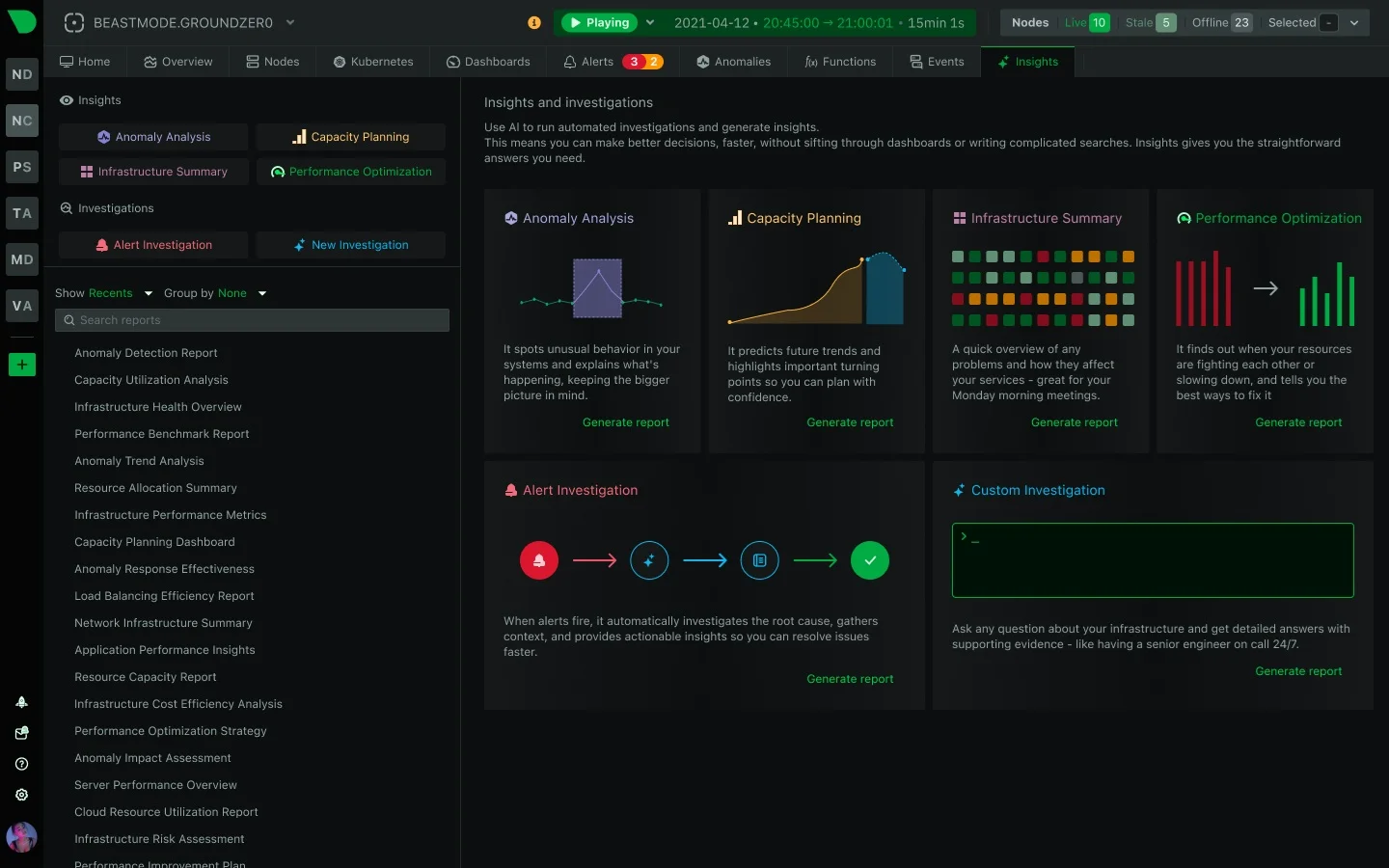
Netdata is famous for its high-resolution, real-time, per-second monitoring. It's incredibly lightweight and features auto-discovery of hundreds of services. You install the agent, and a fully functional web dashboard is immediately available.
- Strengths: Extremely easy setup (near-zero config), per-second metrics, beautiful real-time dashboards, very low resource overhead.
- How it Compares to Zabbix: Netdata is built for real-time troubleshooting on individual hosts, whereas Zabbix is built for long-term, distributed monitoring and alerting. Netdata is far simpler but less comprehensive in its alerting and distributed architecture.
2. LibreNMS
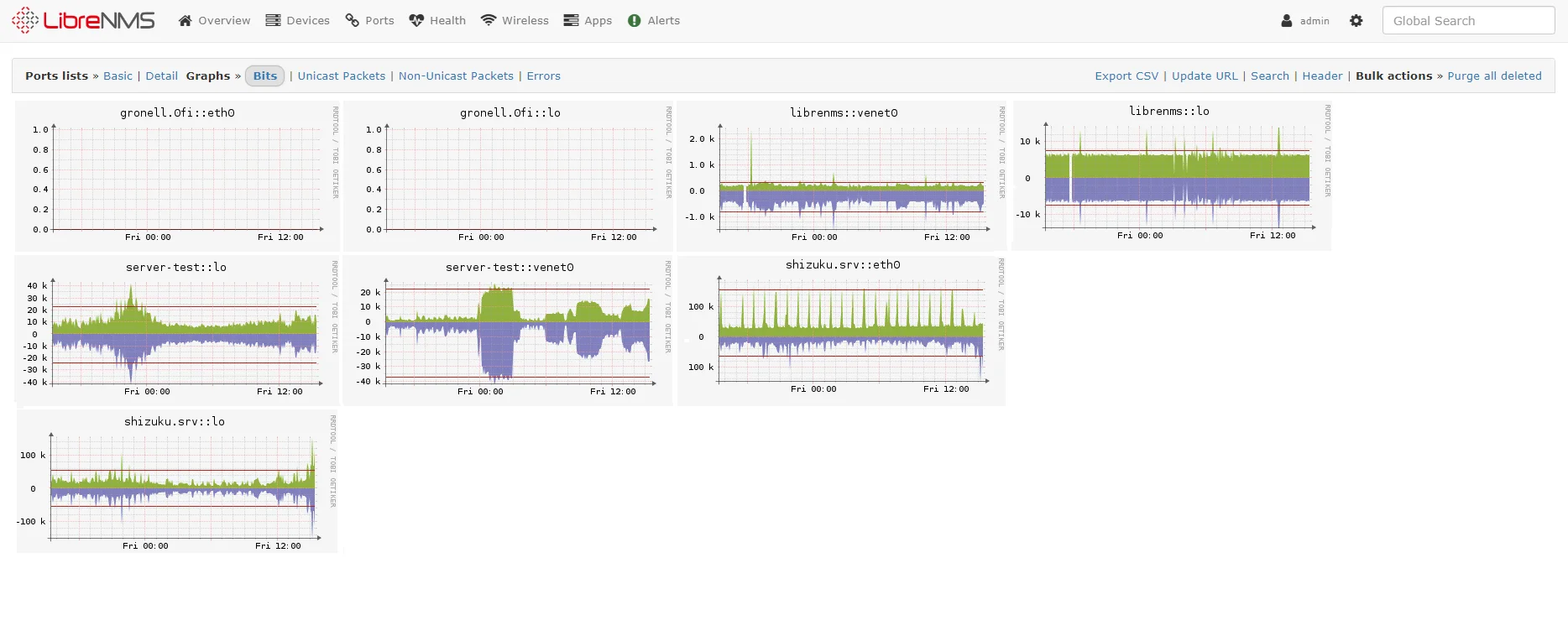
LibreNMS is an open-source, auto-discovering network monitoring system. If your primary use for Zabbix is monitoring routers, switches, and other network hardware via SNMP, LibreNMS is a fantastic alternative.
- Strengths: Excellent auto-discovery for network devices (SNMP, BGP, OSPF), clean interface, and active community.
- How it Compares to Zabbix: It's much more focused on network monitoring and easier to configure for that specific task. Zabbix is more of a general-purpose tool that can do network monitoring, but LibreNMS makes it the default, simple path.
3. Checkmk
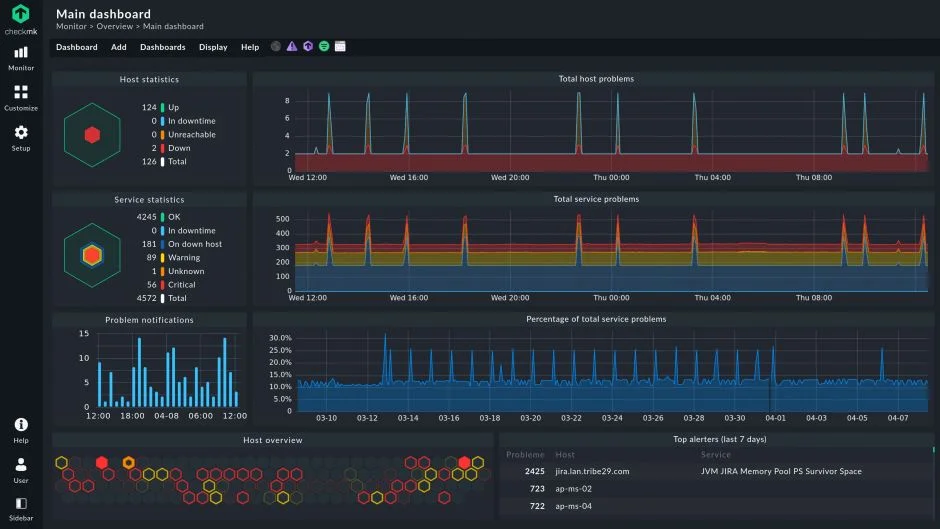
Checkmk is a comprehensive monitoring tool that comes in both a powerful open-source "Raw" edition and a paid Enterprise/Cloud (commercial) edition. It's known for its "smart agents" that collect a vast amount of data with minimal configuration.
- Strengths: Fast deployment thanks to automated service discovery, low CPU usage, and a unified interface that combines infrastructure and network monitoring well.
- How it Compares to Zabbix: Many users find Checkmk's auto-discovery and agent-based setup faster to deploy than Zabbix's manual template-driven approach.
4. Icinga
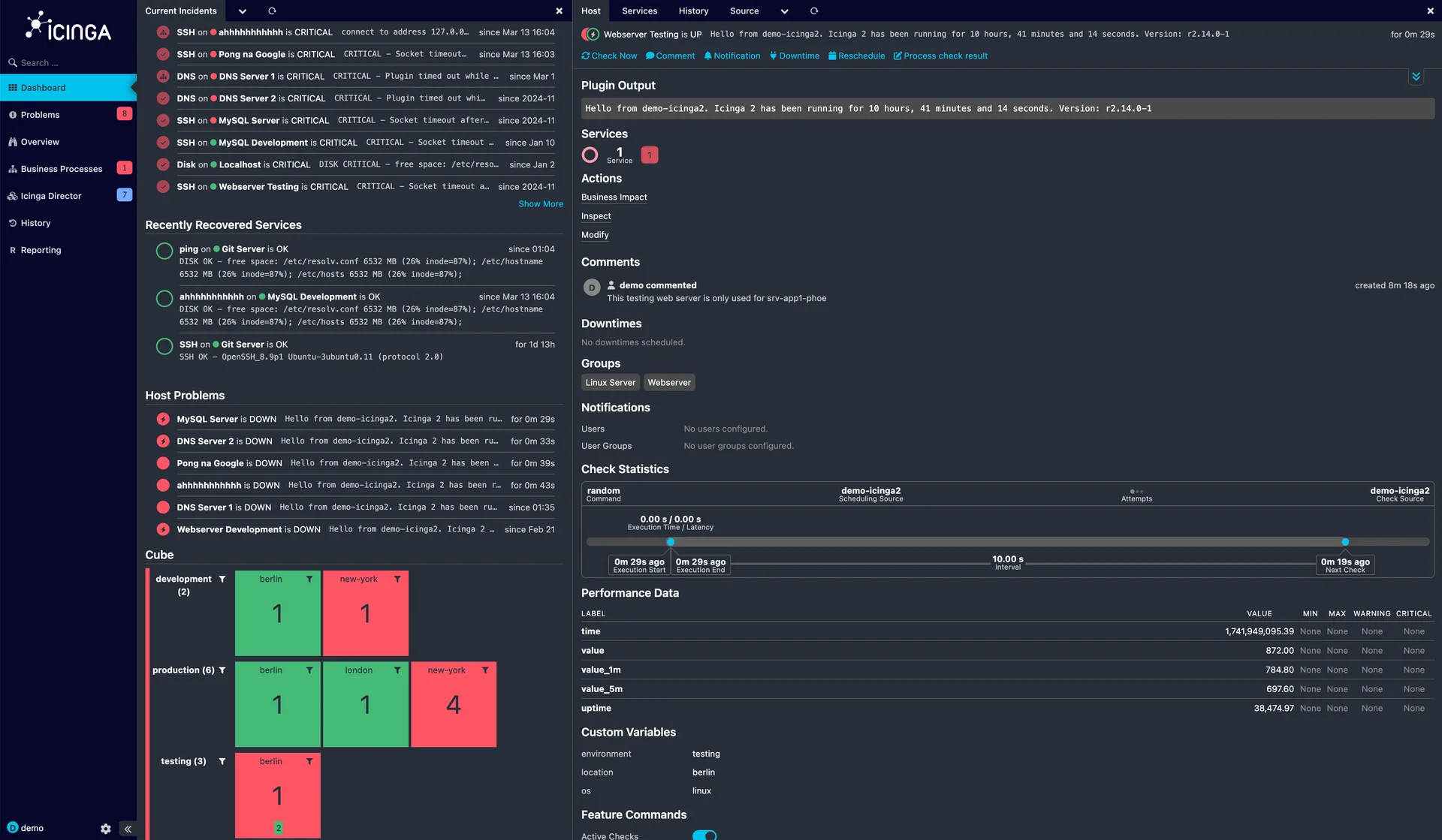
Icinga started as a fork of Nagios (another monitoring veteran) but has evolved into a modern, modular platform. It has a modern web UI and a REST API that makes it easier to integrate with automation tools.
- Strengths: Modular architecture, good for large, distributed environments, and strong API for automation.
- How it Compares to Zabbix: Icinga is often seen as a more modern, API-driven alternative to Nagios and a direct competitor to Zabbix. Its configuration can still be complex but is often considered more flexible for automation.
Category 2: Commercial & SaaS Platforms
This category is for organizations that want to move away from self-hosting entirely. They are willing to pay for a polished, managed solution that includes support and offloads all maintenance.
5. Datadog
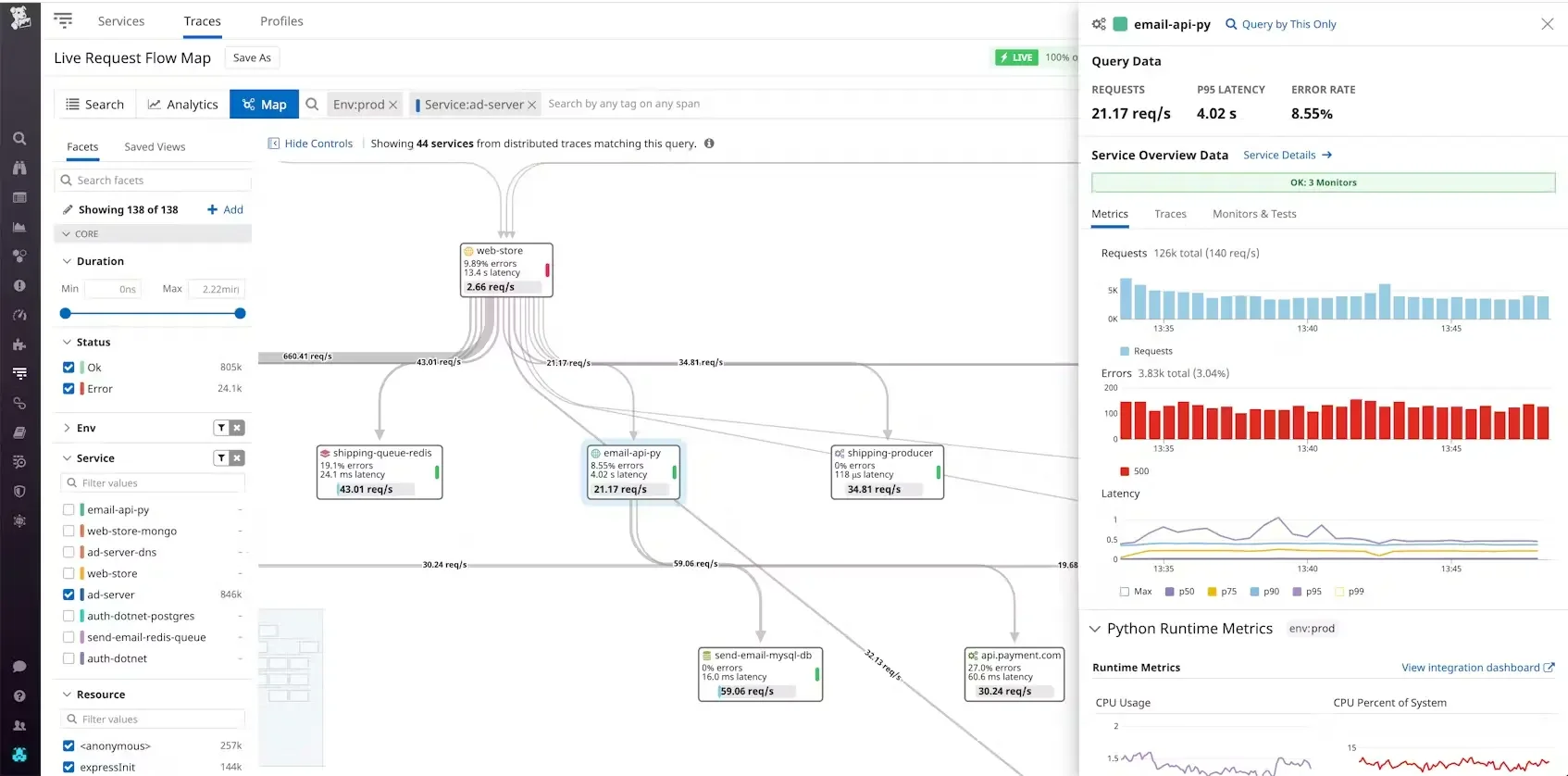
Datadog is a leading SaaS observability platform. It provides a unified solution for infrastructure monitoring, APM, log management, and more. It's known for its polished UI, powerful dashboards, and 1000+ integrations.
- Strengths: Fully managed SaaS (no maintenance), unifies metrics, traces, and logs, and has a best-in-class user interface and integration library.
- How it Compares to Zabbix: Datadog is a full-stack observability platform, while Zabbix is primarily an infrastructure monitoring tool. The main trade-off is cost and control. Datadog is much easier to start, but its usage-based pricing can become very expensive at scale. Zabbix is free, but you pay in "people time" for maintenance.
For a deeper, side-by-side breakdown, check out our dedicated guide: Datadog vs Zabbix.
6. PRTG Network Monitor
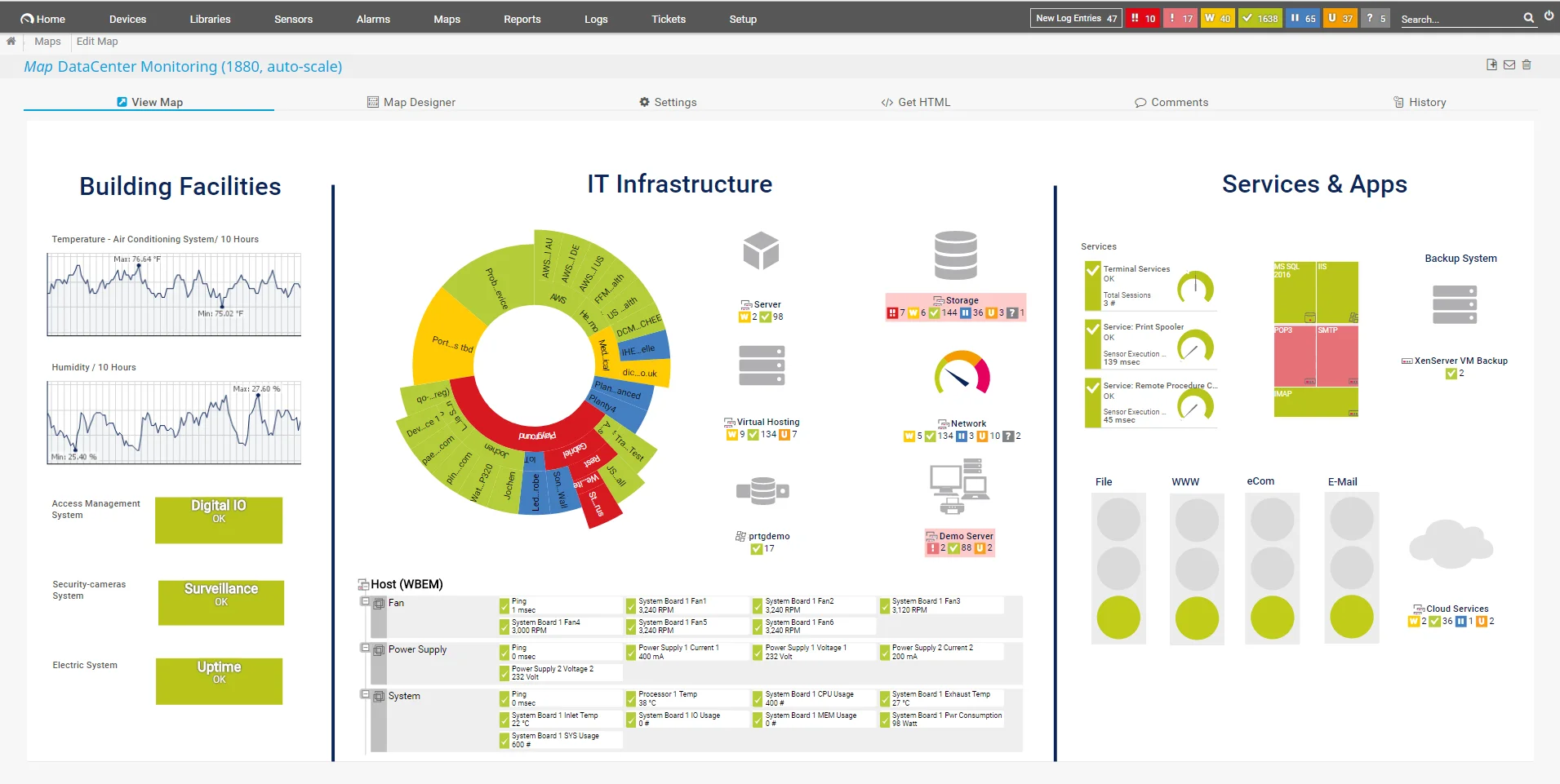
PRTG is an all-in-one monitoring tool popular with IT teams that need a simple, reliable, on-premise solution. It's a commercial product that runs on Windows and is known for its "sensor-based" model.
- Strengths: Very user-friendly and intuitive setup, all-in-one installer (no separate database required), and a clear, sensor-based pricing model. A free tier is available for up to 100 sensors.
- How it Compares to Zabbix: PRTG is significantly easier and faster to set up for comprehensive monitoring. Its licensing model (per sensor) can become costly, whereas Zabbix is free. It's a great choice for teams that want a polished, supported, on-prem (Windows) or SaaS (PRTG Hosted Monitor) tool without the complexity of Zabbix.
7. SolarWinds Network Performance Monitor
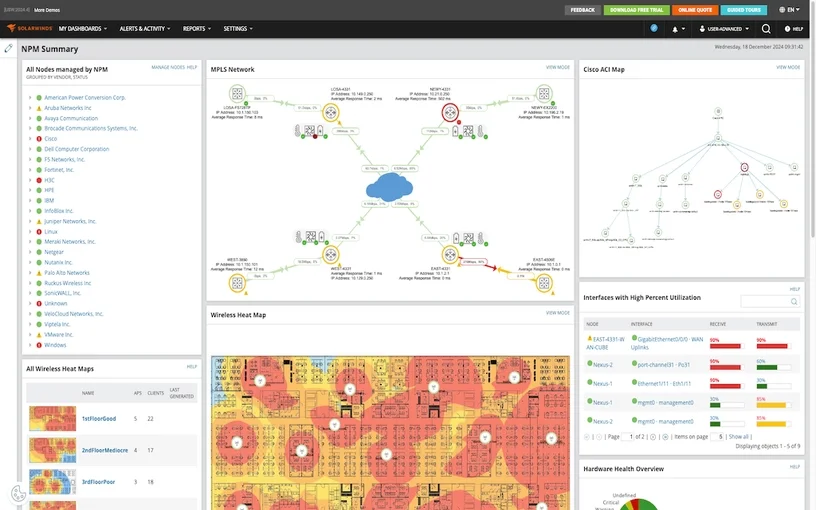
Part of the larger SolarWinds Orion platform, NPM is a top-tier, enterprise-grade tool for deep network monitoring. It provides advanced features like network path analysis and topology mapping.
- Strengths: Deeply detailed network performance insights, powerful alerting, and strong reporting, backed by a large enterprise vendor.
- How it Compares to Zabbix: SolarWinds is a heavy-duty, commercial-grade tool focused squarely on network professionals. Zabbix is a broader, open-source tool. Teams with complex, large-scale networks often choose SolarWinds for its specialized features.
8. ManageEngine OpManager
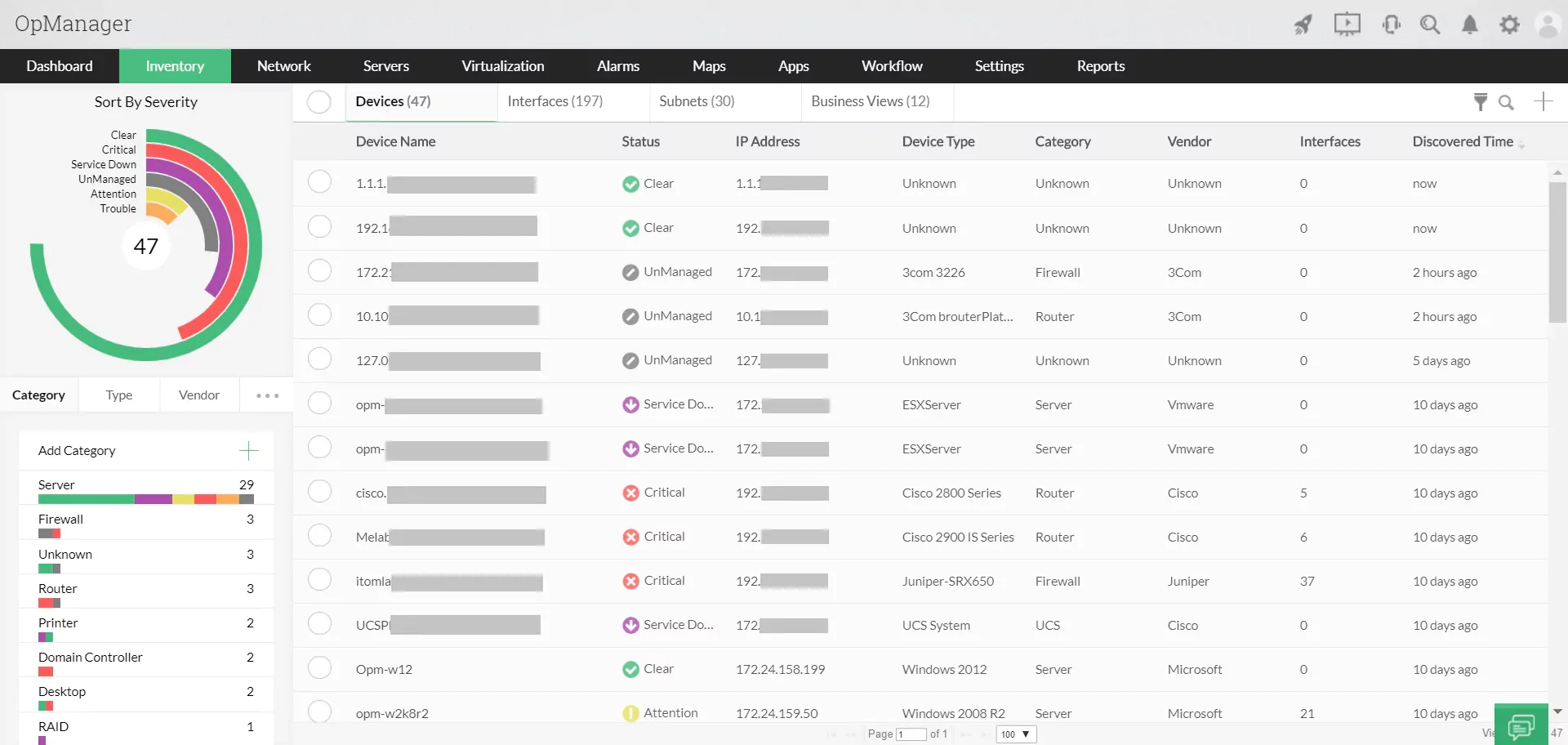
OpManager is another comprehensive, all-in-one infrastructure monitoring solution from a major enterprise vendor. It's known for its easy-to-use interface and broad device support, available for both Windows and Linux.
- Strengths: Simple to install and get running, good balance of network and server monitoring, and integrates well with other ManageEngine IT management tools.
- How it Compares to Zabbix: Similar to PRTG, OpManager competes by offering a more polished, user-friendly, and commercially supported experience than Zabbix, all while remaining an on-premise solution.
Category 3: Modern Cloud-Native & Observability Stacks
This category is for teams working with Kubernetes, microservices, and serverless functions. For them, Zabbix's host-centric model is a poor fit. They need a platform built for dynamic services, distributed tracing, and unified telemetry (metrics, traces, and logs).
9. Prometheus & Grafana
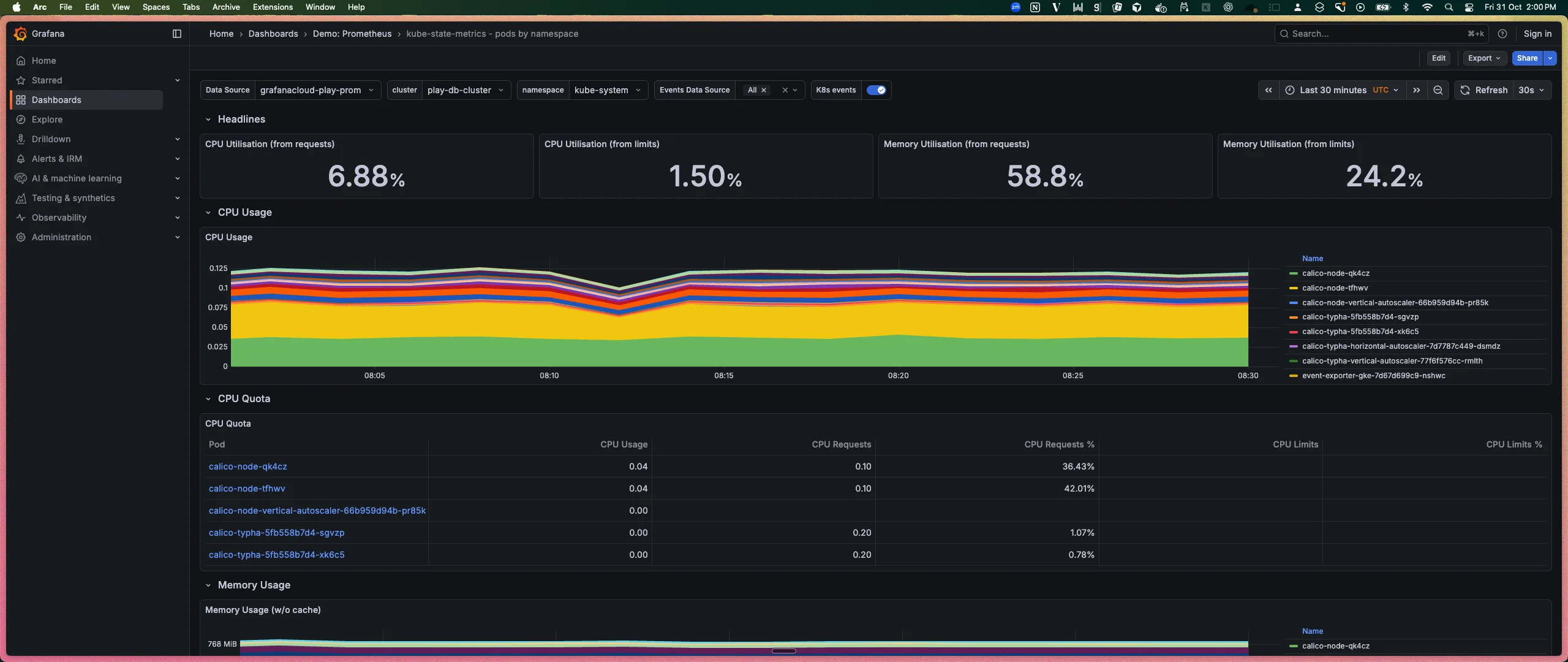
Prometheus is a time-series database with a powerful pull-based collection model and a flexible query language (PromQL). Grafana is the leading open-source dashboarding tool for visualizing that data.
- Strengths: The CNCF-standard for Kubernetes monitoring, powerful PromQL query language, and a massive, active community. Grafana provides unparalleled dashboarding flexibility.
- How it Compares to Zabbix: Prometheus is purpose-built for dynamic, microservice environments where services appear and disappear. Zabbix is built for more static infrastructure. The "P-G" stack is more powerful for cloud-native metrics, but it's not a complete solution. You still need separate tools for logs (like Loki) and traces (like Jaeger), and you have to manage all these components yourself.
10. SigNoz
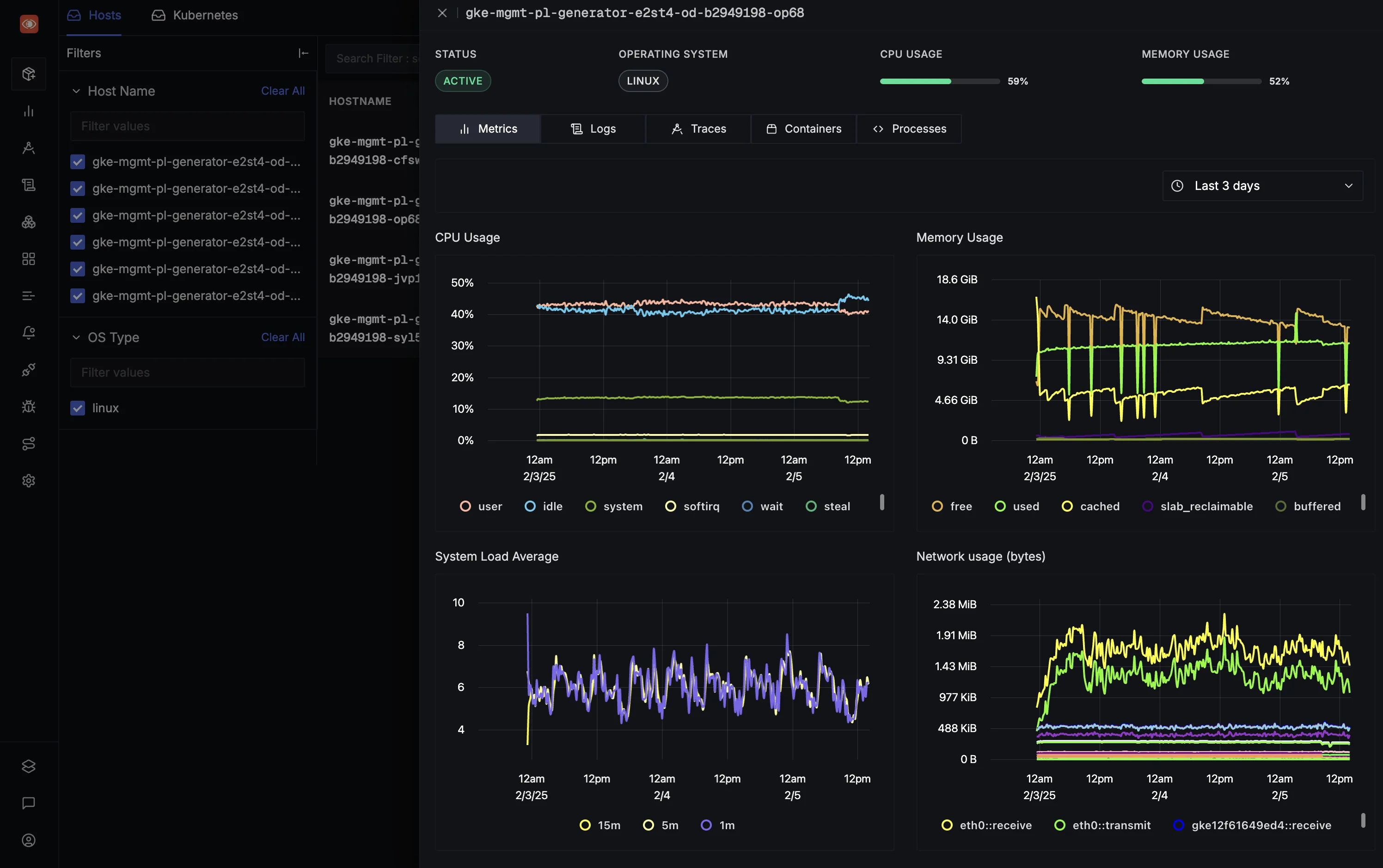
SigNoz is an all-in-one observability platform that unifies metrics, traces, and logs into a single application. It's built from the ground up to support OpenTelemetry, the standard for cloud-native instrumentation.
This places SigNoz in a unique position. It offers the unified, all-in-one experience of a SaaS tool like Datadog, but with the open-source, self-hosted model of Zabbix or Prometheus.
- Strengths:
- All-in-One: A single tool for metrics, traces, and logs. No need to glue multiple tools together.
- OpenTelemetry Native: Built on a future-proof, vendor-neutral standard.
- Powerful APM: Provides distributed tracing to see full request lifecycles across microservices.
- Flexible Deployment: Can be self-hosted (like Zabbix) or used as a managed cloud service (like Datadog).
- How it Compares to Zabbix: SigNoz directly solves Zabbix's biggest weakness: the lack of native APM and log management. It's the ideal alternative for teams moving to microservices who want to see why an application is slow, not just that a server's CPU is high.
You can choose between various deployment options in SigNoz. The easiest way to get started with SigNoz is SigNoz cloud. We offer a 30-day free trial account with access to all features.
Those who have data privacy concerns and can't send their data outside their infrastructure can sign up for either enterprise self-hosted or BYOC offering.
Those who have the expertise to manage SigNoz themselves or just want to start with a free self-hosted option can use our community edition.
Zabbix Alternatives Comparison at a Glance
Here are the top alternatives in a simple table.
| Tool | Model | Core Focus | APM/Tracing | Log Analytics |
|---|---|---|---|---|
| Zabbix | Self-Hosted, Open-Source | Infrastructure & Network | No | No (Basic file only) |
| SigNoz | Self-Hosted or SaaS, Open-Source | Full Observability | Yes (Native) | Yes (Native) |
| Prometheus + Grafana | Self-Hosted, Open-Source | Cloud-Native Metrics | No (Needs Jaeger) | No (Needs Loki) |
| Datadog | SaaS, Commercial | Full Observability | Yes (Native) | Yes (Native) |
| Netdata | Self-Hosted, Open-Source | Real-Time Host Metrics | No | No |
| LibreNMS | Self-Hosted, Open-Source | Network Monitoring | No | No |
| Checkmk | Self-Hosted, Open-Source | Infrastructure & Network | No | No |
| PRTG | On-prem (Windows) or Commercial (PRTG Hosted Monitor) | Infrastructure & Network | No | No |
| Icinga | Self-hosted, Open-Source | Infra & Network (Nagios fork) | No | No |
| SolarWinds NPM | On-prem, Commercial | Enterprise Network Monitoring | No | No |
| OpManager | On-prem (Win/Linux), Commercial | Network + Server Monitoring | No | No |
How to Migrate from Zabbix (A Mini-Guide)
Moving from a deeply embedded tool like Zabbix can be daunting. Here is a high-level plan.
- Audit Your Current Setup: Before you move, you must understand what you're monitoring. Ask:
- Which
HostsandItemsare critical? - Which
TriggersandAlertshave actually fired in the last 6 months? - Which
Dashboardsdoes the team actually use? - You will likely find that 80% of your value comes from 20% of your configuration.
- Which
- Map Zabbix Concepts to the New Tool:
- Zabbix
Hosts-> Your new tool's equivalent (e.g., a node, a device). - Zabbix
Items(SNMP) -> Most tools (LibreNMS, PRTG, OpManager) have an SNMP-based discovery. - Zabbix
Items(Agent) -> This is the biggest change.- For Prometheus/SigNoz, you will use
exporters(like the Node Exporter) to expose metrics. - For SaaS tools, you will install their proprietary agent.
- For Prometheus/SigNoz, you will use
- Zabbix
Triggers-> You will need to rebuild your alert rules in the new tool's language (e.g., PromQL alerts or Datadog's monitor syntax).
- Zabbix
- Run in Parallel: Do not plan a "cut-off" migration. Install your new monitoring solution and run it alongside Zabbix for at least a few weeks. This lets you:
- Compare data and ensure your new tool is collecting everything.
- Tune the new alert rules to avoid "alert spam" or missed alerts.
- Train your team on the new interface without pressure.
- Decommission Zabbix: Once you are confident in the new system's data and alerts, you can begin to disable Zabbix alerts, and finally, shut down the Zabbix server and proxies.
Frequently Asked Questions
Is Zabbix outdated in 2026?
No, but it is specialized. Zabbix is not outdated for its core purpose: deep, reliable monitoring of traditional IT infrastructure like servers and network hardware. It is, however, not the modern choice for monitoring dynamic, cloud-native applications or for teams that need unified (metrics, logs, traces) observability.
Is Grafana better than Zabbix?
They are different tools that are often used together. Zabbix is a complete monitoring system (it collects, stores, and alerts on data). Grafana is a visualization tool (it queries data sources and displays them). While Zabbix has its own dashboards, many users prefer to use Grafana as the "front-end" for their Zabbix data, using the Zabbix-Grafana plugin.
Why is Prometheus better than Zabbix?
Prometheus is not "better" in all cases, it is "better-suited" for cloud-native environments. Zabbix supports both pull (passive agent/SNMP) and push (active agent) collection, and is host-centric by design. Prometheus is primarily pull with rich service discovery, which better suits dynamic Kubernetes/microservice workloads.
What is the best network monitoring tool if I am on Zabbix today?
If your primary pain point is Zabbix's complexity for network monitoring, your best alternatives are LibreNMS (if you want open-source) or PRTG Network Monitor (if you want a polished commercial tool). Both are widely praised for being easier to set up for network-centric monitoring.
Hope we answered all your questions regarding Zabbix alternatives. If you have more questions, feel free to use the SigNoz AI chatbot, or join our slack community.
You can also subscribe to our newsletter for insights from observability nerds at SigNoz, get open source, OpenTelemetry, and devtool building stories straight to your inbox.
